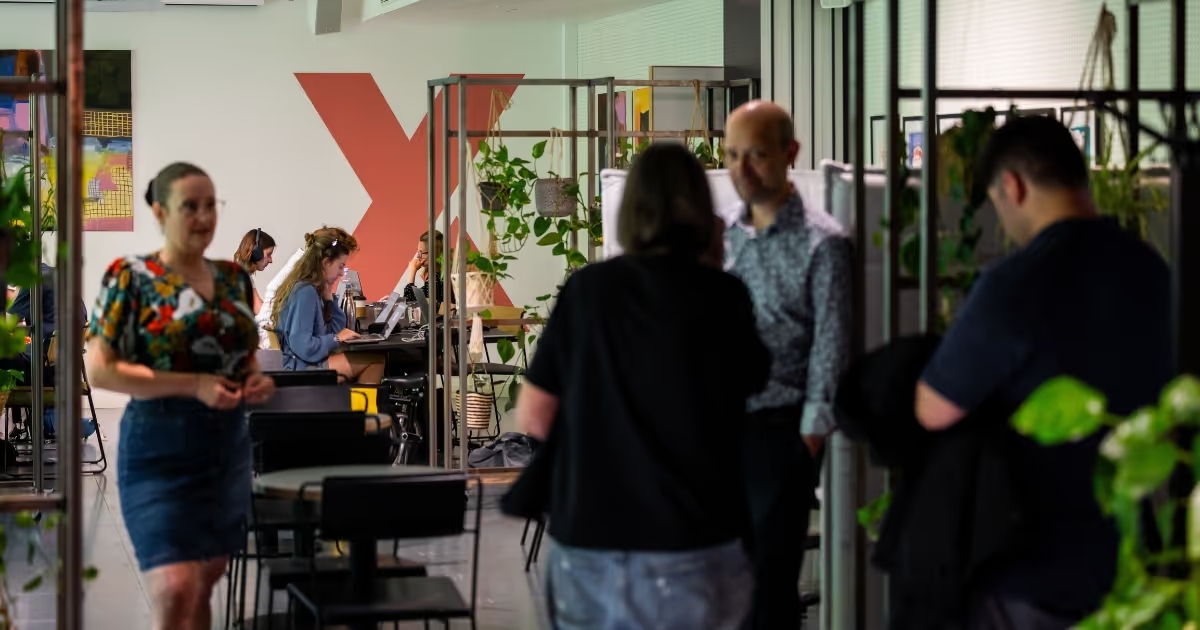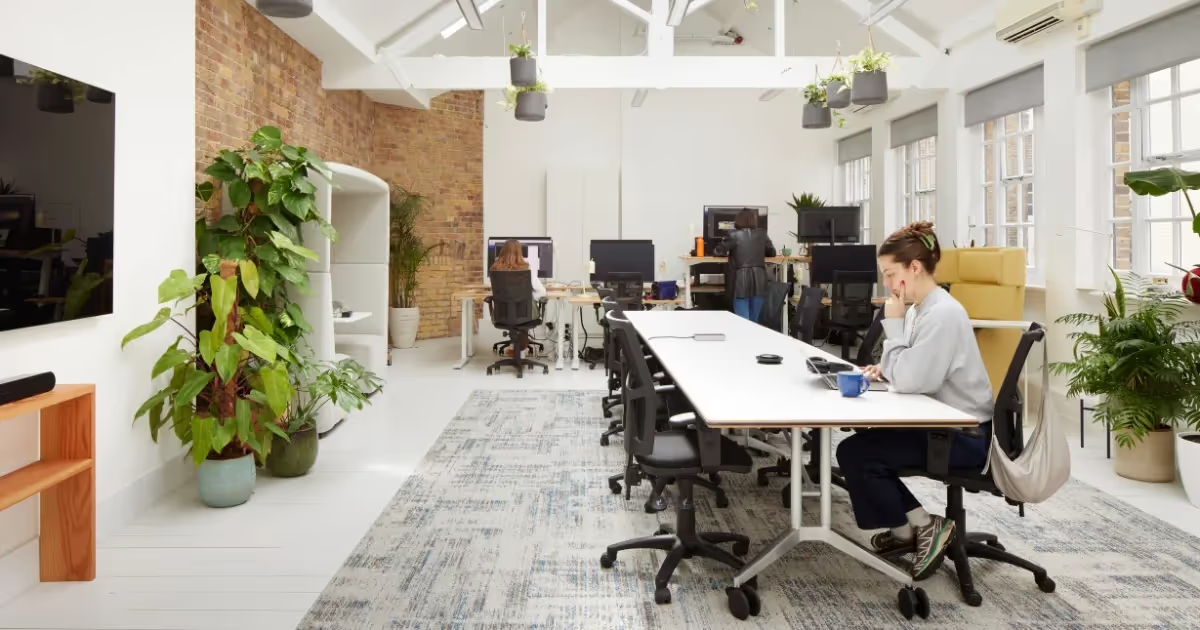The shift into the new normal is one of increasing change and flexibility. With the current demand for room to manoeuvre when it comes to businesses and employees alike, spaces are evolving to adapt, allowing workers to be able to change their settings depending on what they need at any given point in time.
The New Normal
{{divider}}
The shift into the new normal is one of increasing change and flexibility. With the current demand for room to manoeuvre when it comes to businesses and employees alike, spaces are evolving to adapt, allowing workers to be able to change their settings depending on what they need at any given point in time.
{{divider}}
In addition to this, offices are having to implement new methods of ensuring that members stay socially distant, and considering leveraging technology such as the possibility of installing ionization tech to help eradicate virus particles within the air. People are consuming space in a new way, and looking to mix up HQ and distributed working locations. As the drive to flex accelerates, technology is paramount in the tenants’ decision-making process. Workers want easier ways to find and access space with as few touch-points as possible, such as smart access to multiple locations across the country.
{{divider}}
The flexible forces driving the evolution of the real estate market are the shift from long-term to short-term, via leases to licence agreements, and an increased focus on the sharing economy. Whereas previously companies would be expected to hire a space and complete lengthy legal processes on top of filling and furnishing everything from scratch, the serviced workspace of the future comes with all the amenities a business needs, for a flexibly-agreed fee.
{{divider}}

The Shift To Flexible Working
{{divider}}
Not only has the environment changed, but the roles within the new normal have shifted to match. Flexible roles and hours are changing how, where and when employees work. This can include an increase in part-time roles and term-time work as opposed to the traditional full-time contract, job sharing, whereby two or more part-time employees share responsibility for a job between them, flexitime - which enables employees to choose where to begin and end work, and mobile working which permits employees to spend all or part of their working week remote from the employer’s workplace.
{{divider}}
Other formats include compressed hours which is a reallocation of work into fewer and longer blocks during the week, an extension of this being ‘annual hours’ - a fixed amount of time that an employee is expected to work over a year, but where there is variation in terms of the length of the working day and week, as opposed to zero hours contracts - where there is no guarantee of a minimum number of working hours, so an employee can be called upon as and when required, and paid just for the hours that they work.
{{divider}}
The list is by no means exhaustive and can be extended to include career breaks or sabbaticals, commissioned outcomes based solely on a target output, shift-based work and self-rostering, taking time off for training, and other formal or informal arrangements. The COVID-19 pandemic has seen businesses adopt flexible working practices like remote working at an unprecedented rate. Not only does this protect the workforce and provide business continuity, they support broader, official measures to curb the outbreak, and if deployed correctly in the long-term, can improve business agility and employee satisfaction rates.
{{divider}}
Flexible Benefits
{{divider}}
Flexible work provides businesses with both direct and indirect benefits. Direct benefits include savings on overheads as remote work and hot-desking comes at a more affordable fee, as well as less unused office space due to better matches between business resources and demand. Indirect benefits are delivered in the form of improved employee job satisfaction and wellbeing. Research shows that flexible workers have a higher level of job satisfaction and commitment, as well as reduced absence rates and better ability to manage mental health and stress. Flexible work also helps to improve workplace equality and access, as those with disabilities or outside roles such as caring can better find ways to adapt to the demands of the role.
{{divider}}
In April 2003, the UK Government introduced the ‘right to request flexible working’ which historically applied to parents and certain other carers. The legislation now includes all employees with at least 26 weeks' continuous employment, regardless of parental or caring responsibilities. And two fifths of UK employers believe the right to request flexible working legislation has been effective in increasing the uptake of flexible working in their organisation.
{{divider}}
Talent attraction and retention, corporate identity and user experiences are a few of the foundational elements that will forever make the office a staple of any workforce. Despite increased remote working due to the coronavirus pandemic, the office remains a pillar for future of work practices – and flexibility is the way forward.
{{divider}}
A Holistic Approach To Growth
{{divider}}
Despite the growing numbers of remote knowledge workers, some Fortune 500 companies have reversed their work-from-home policies and invested in new office spaces that help to improve company culture, attract and retain talent, and maximise collaboration. Companies realise they need to bridge the gap between physical and digital work with seamless transitions in frictionless offices. There are some slight differences among service providers, but the common objective is to achieve the best employee experience.
{{divider}}
Flexible spaces have evolved and the paradigm is here to stay, the focus is now on ensuring productivity and peace of mind. Going forward, as corporate uptake continues to grow and tenants demand more advanced technology to meet requirements, operators will need to stay ahead of the game with platforms that ensure the provision of best-of-breed solutions, building a future-proof environment.
{{divider}}
While short-term lets are more accessible than ever, the flexible model makes it easier for customers to stay as they grow, improving customer retention, it also means achieving better capacity utilisation and more value per square foot. In terms of the customer journey, there is a growing opportunity for flexible space providers to become trusted advisors that continuously monitor and optimise their offerings and align them to changing needs. This makes for a long-term value-based relationship far removed from the traditional landlord-tenant interaction.
{{divider}}




.png)
.avif)


.avif)


.avif)
.avif)




